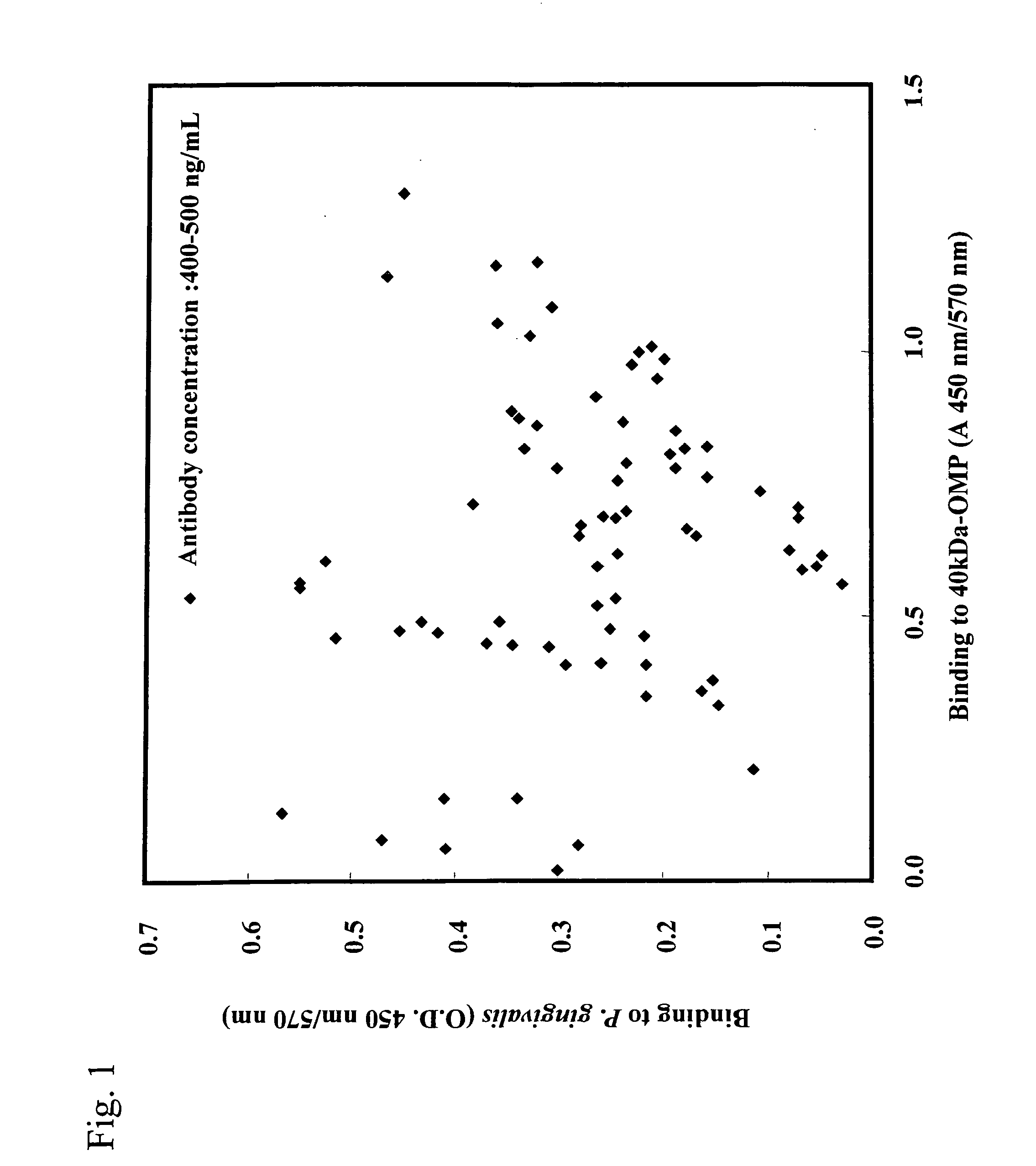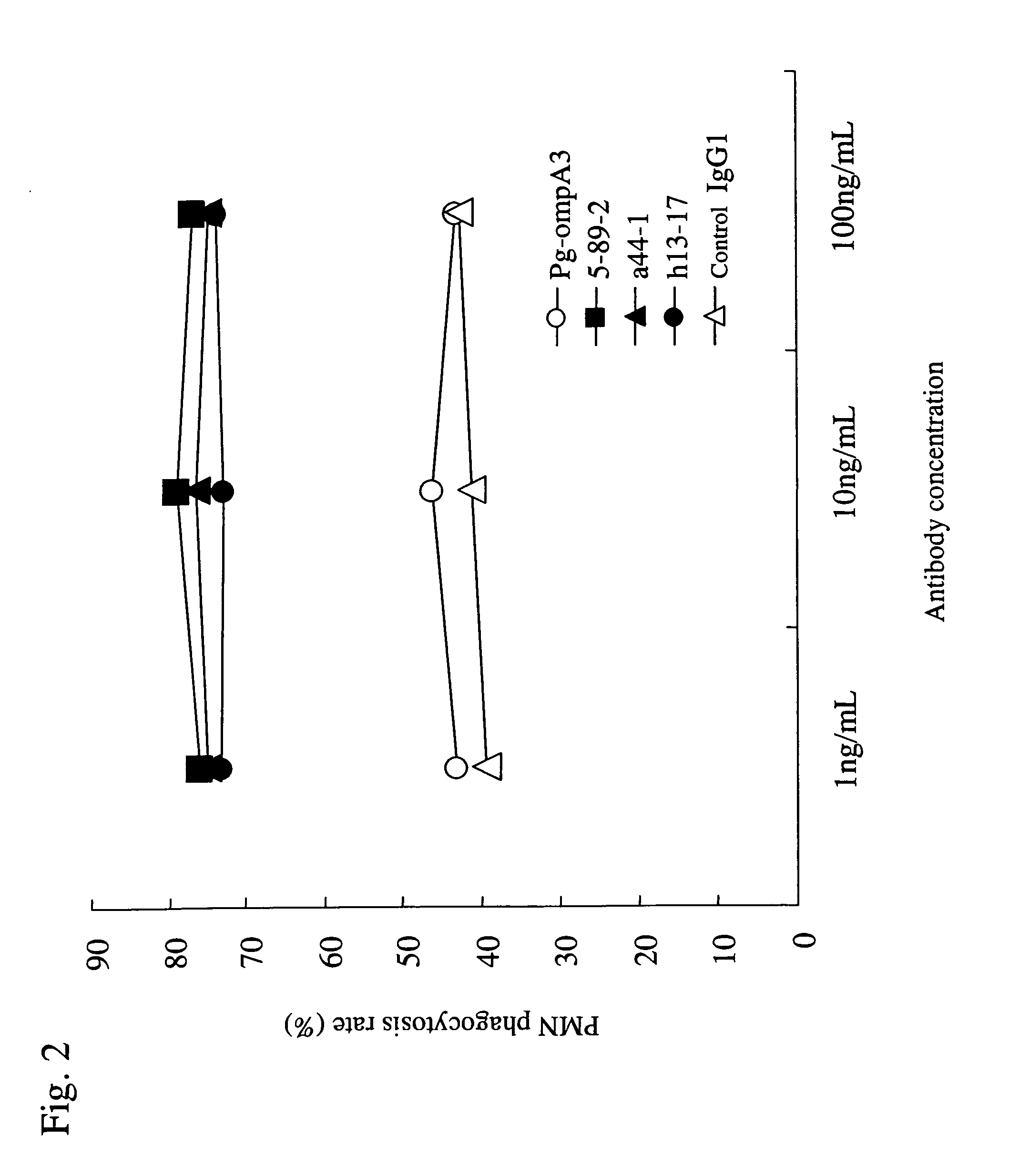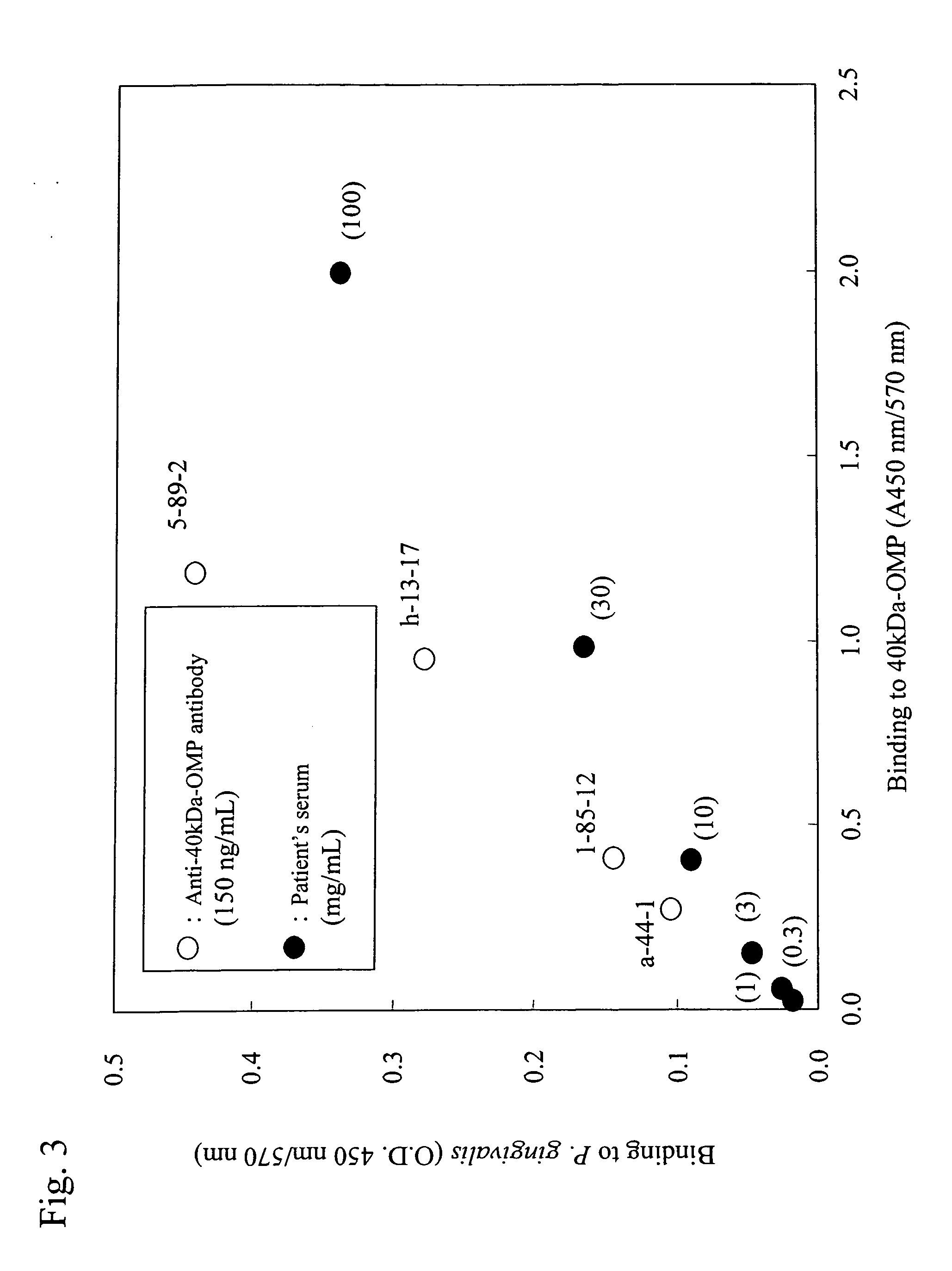Therapeutic agent for periodontal disease
- Summary
- Abstract
- Description
- Claims
- Application Information
AI Technical Summary
Benefits of technology
Problems solved by technology
Method used
Image
Examples
example 1
Preparation of Recombinant 40-kDa OMP (r40-kDa OMP)
[0103] Recombinant 40-kDa OMP (r40-kDa OMP) was prepared as follows. Escherichia coli (K-12) having a recombinant plasmid pMD125 prepared by incorporation of full-length r40-kDa OMP DNA (DNA Data Bank of Japan: accession No. AB059658) into a vector was cultured in an LB medium (1% tryptone (produced by Becton, Dickinson and Company), 0.5% yeast extract (produced by Becton, Dickinson and Company), and 0.5% NaCl) containing 10 μ / mL tetracycline. Bacterial bodies were collected using a centrifuge and then disrupted by ultrasonication. A supernatant wherein the bacterial bodies had been disrupted was obtained using a centrifuge and then r40-kDa OMP was purified according to the method of Kawamoto et al., (Int. J. Biochem.1991 Vol 23: 1053). The thus prepared r40-kDa OMP was subjected to substitution with PBS(−) using a dialysis membrane (molecular weight of 10,000 or less as a cut-off, produced by Spectrum Laboratories Inc.). Thus, a p...
example 3
Preparation of a Human Monoclonal Antibody Against 40-kDa OMP
[0105] Monoclonal antibodies in this example were prepared according to general methods described in “Introduction to Monoclonal Antibody Experimental Protocols (Monoclonal Ko-tai Jikken So-sa Nyu-mon) (written by Tamie Ando, issued by KODANSHA, 1991) and the like. r40-kDa OMP prepared in Example 1 was used as an immunogen. As animals to be immunized, the human-antibody-producing mice (produced in Example 2) producing human immunoglobulin were used.
[0106] r40-kDa OMP prepared in Example 1 was mixed with an RIBI adjuvant (produced by Corixa Corporation). The human-antibody-producing mice were subjected to initial immunization by intraperitoneal administration of 20 μg of r40-kDa OMP. Booster immunization was carried out by 4 times intraperitoneal administration of the mixed solution of r40-kDa OMP and the RIBI adjuvant every 1 to 2 weeks after initial immunization. Furthermore, 3 days before obtaining the spleen cells as ...
example 4
Detection of a Monoclonal Antibody having a Human Immunoglobulin γ Chain
[0109] 50 μl of r40-kDa OMP (1 μg / ml 50 mM Na2HCO3) prepared in Example 1 was added to each well of a 96-well microplate for ELISA (Maxisorp, produced by Nunc), followed by 30 minutes of incubation at room temperature. r40-kDa OMP was thus adsorbed onto the microplate. Subsequently, the supernatants were discarded. A blocking reagent (SuperBlock™ Blocking Buffer produced by Pierce Biotechnology Inc.,) was added to each well, followed by 10 minutes of incubation at room temperature. Thus, sites to which no r40-kDa OMP had bound were blocked. In this manner, a microplate was prepared so that each well was coated with r40-kDa OMP. Furthermore, P. gingivalis 381 strain was anaerobically cultured in Tripticase soy broth (produced by BBL) supplemented with 5 μg / mL hemin (produced by Sigma), 0.5 μg / mL vitamin K, and 0.5% yeast extract (produced by Difco Laboratories) at 37° C. P. gingivalis was grown to the mid-log ph...
PUM
| Property | Measurement | Unit |
|---|---|---|
| Therapeutic | aaaaa | aaaaa |
| Antimicrobial properties | aaaaa | aaaaa |
| Bioabsorbable | aaaaa | aaaaa |
Abstract
Description
Claims
Application Information
 Login to View More
Login to View More - R&D
- Intellectual Property
- Life Sciences
- Materials
- Tech Scout
- Unparalleled Data Quality
- Higher Quality Content
- 60% Fewer Hallucinations
Browse by: Latest US Patents, China's latest patents, Technical Efficacy Thesaurus, Application Domain, Technology Topic, Popular Technical Reports.
© 2025 PatSnap. All rights reserved.Legal|Privacy policy|Modern Slavery Act Transparency Statement|Sitemap|About US| Contact US: help@patsnap.com



